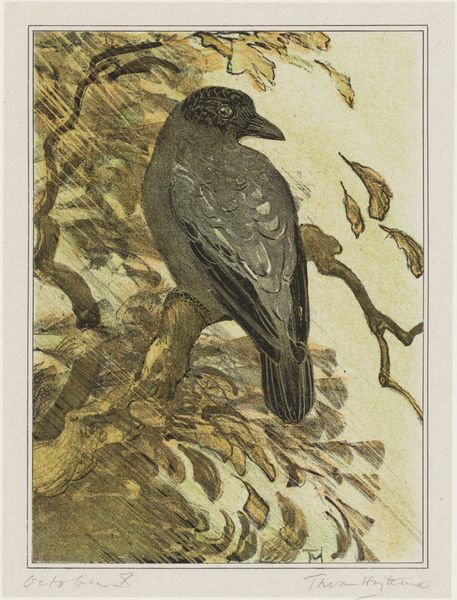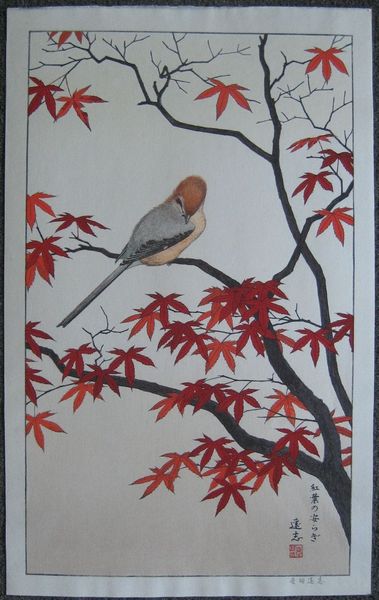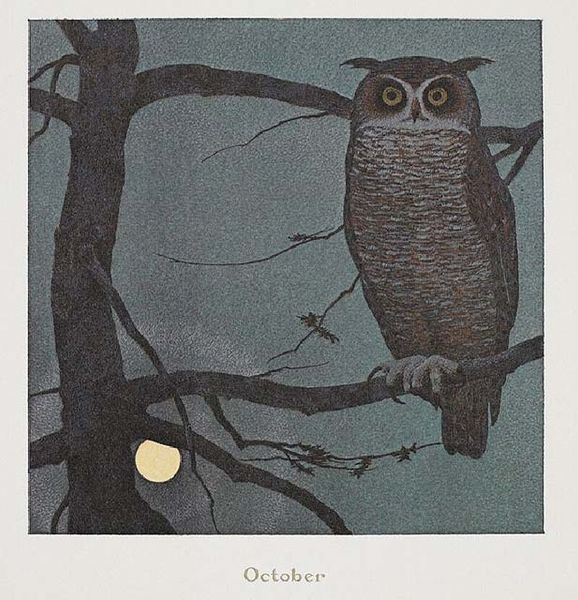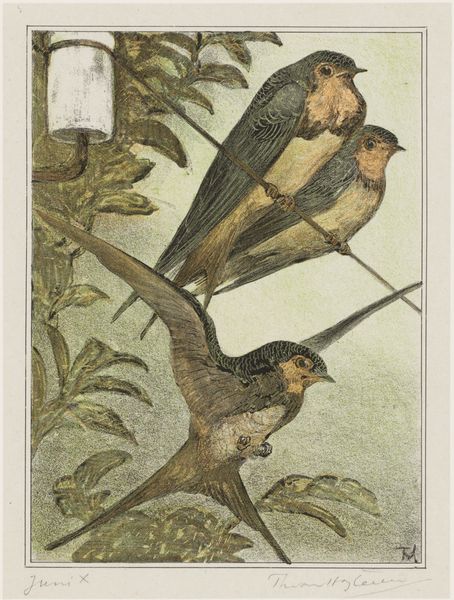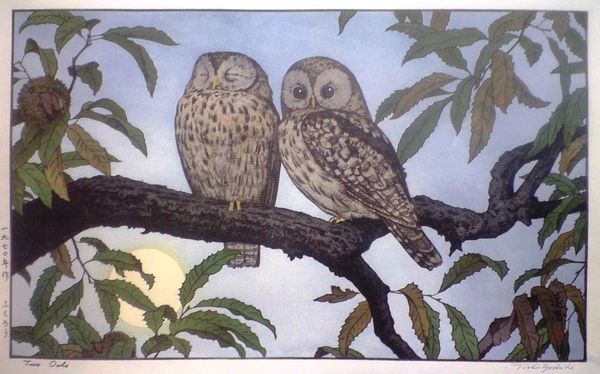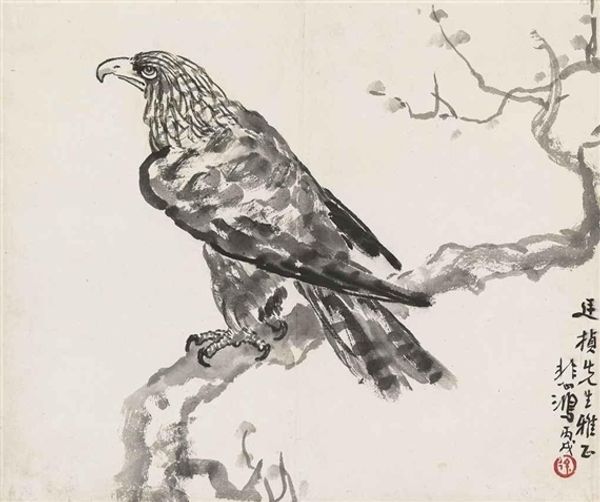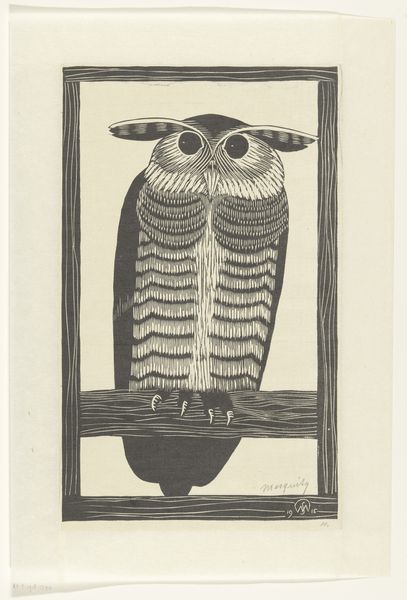
Copyright: Toshi Yoshida,Fair Use
Editor: We're looking at Toshi Yoshida's "Eagle Owl" from 1968, a woodblock print. The owl’s stare is pretty intense. What stands out to you about it? Curator: Considering Yoshida's roots in the sosaku-hanga movement, it's crucial to examine the production of this piece. Notice how the woodblock printing technique, usually associated with folk art or commercial applications, is elevated here to create a nuanced portrayal of nature. What does this blending of "high" and "low" art traditions suggest about the artist's intent? Editor: Well, the artist himself was responsible for all phases of production. Perhaps by controlling the entire process, from sketching to carving and printing, he’s claiming a space for the artist as a craftsman, too. Curator: Exactly! And this links to larger social and economic factors. Post-war Japan experienced a surge in consumer culture and the valuing of craftsmanship. By embracing the sosaku-hanga style, Yoshida is not only producing an aesthetic object but also commenting on the evolving role of the artist within a changing economic landscape. What’s your take on how the image's market and availability influence its status as a cultural artifact? Editor: That's interesting! I guess mass-produced art also has cultural value in a different way than unique art pieces. It makes me think more about how it circulates and who consumes it. Curator: Precisely. Looking at it this way reveals a far richer story beyond just the surface representation of the owl. Editor: I'll definitely view prints with a different lens from now on! I appreciate your insight!
Comments
No comments
Be the first to comment and join the conversation on the ultimate creative platform.
